As I may have mentioned on the pages of this blog in prior posts, I volunteer at the Desert Botanical Garden in Phoenix, AZ. It is a wonderful place to experience desert flora from the Sonoran Desert and other arid regions of the world.
Whenever I work with the various dried seed pods, I am aware of the miracle of nature they represent. That a large flower can grow from the tiniest of seeds is a marvel. Not only that, but many seeds have a beauty of their own.
I recently had the opportunity to work with milkweed seed pods (Asclepias erosa). When I opened the first seed pod, this is what I saw.
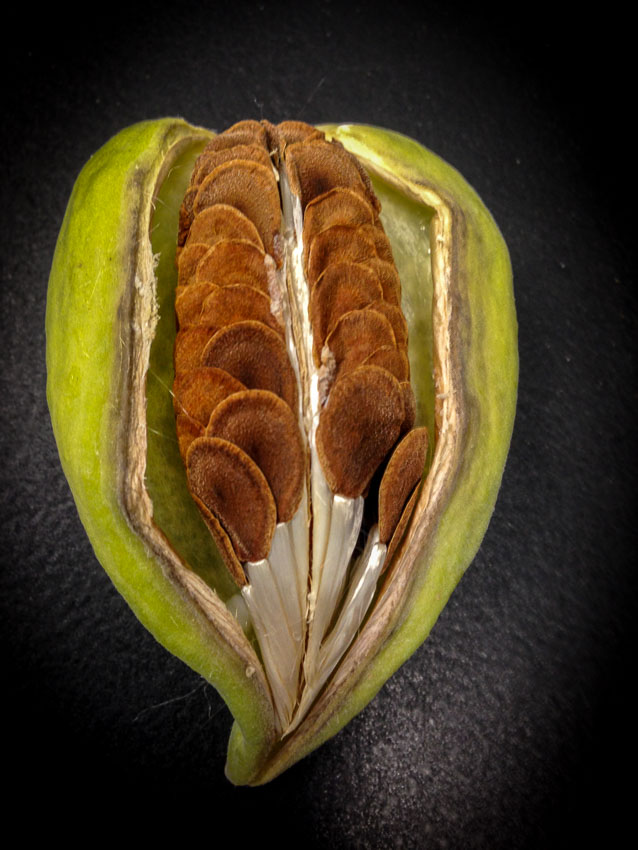
** NOTE ** These seed pods were not as dry as they would be in nature, but they had opened on their own and the seeds were removed and dried for storage.
Milkweed plays a key role in the health and welfare of the Monarch Butterfly. You can read more about that HERE. I am writing this post to show the form, function and beauty of the milkweed seed pod.
I was struck by the symmetry of the seeds and how they were aligned in a very particular pattern. In addition to the symmetry, I appreciated the rich colors displayed.
Here is the main seed structure removed from the pod. Notice how some seeds are separated from the main cluster. They fell off readily and easily separated.
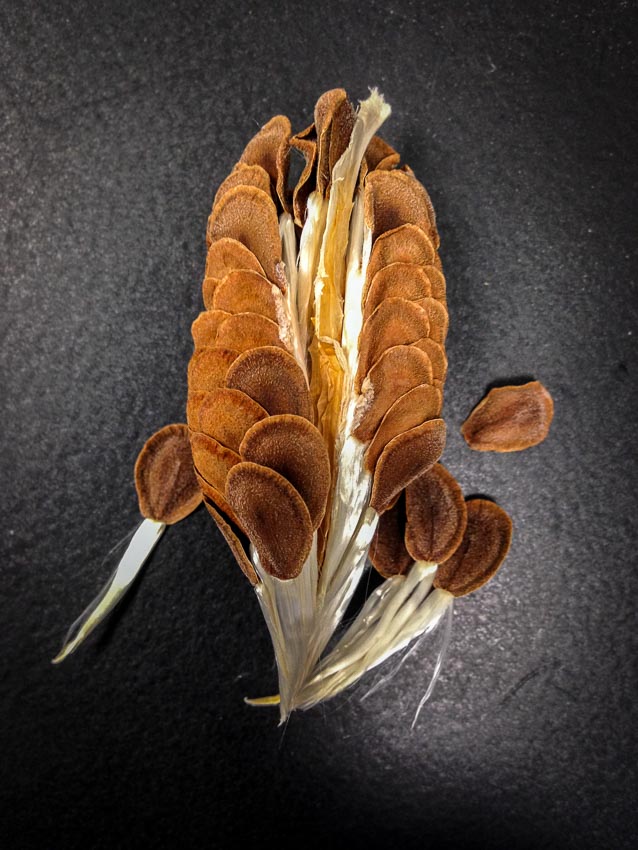
As they were separated, they reminded me of tadpoles with their pearly white, almost silky tails flowing easily behind them.
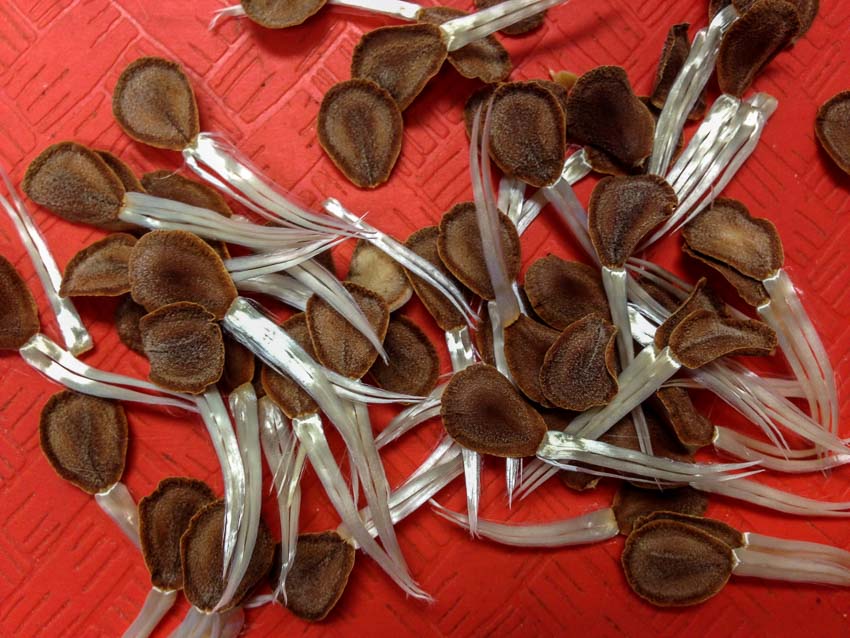
As they began to dry, however, they opened up on their own accord to form the fluffy wing-like structures we have come to know.

In no time at all, there was a table full of the “wings.”
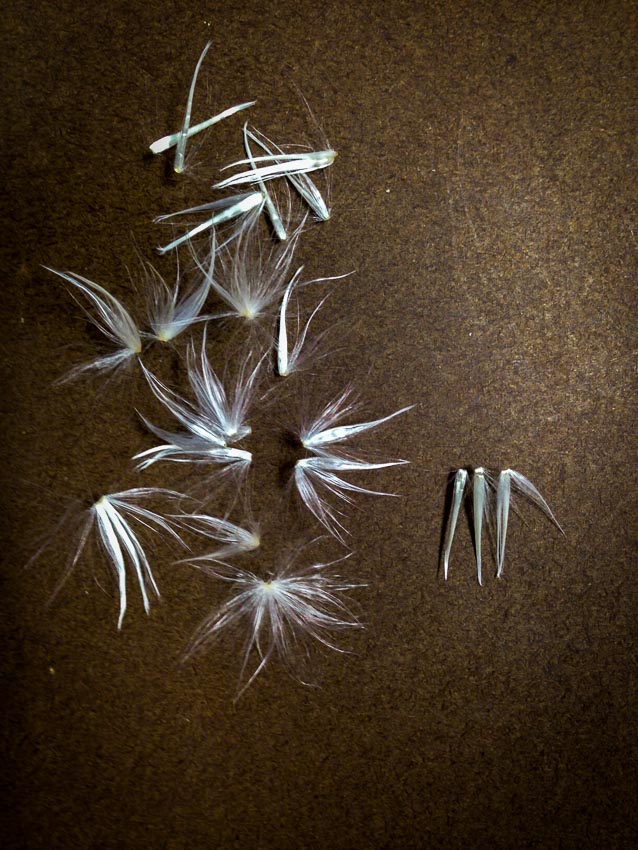
If all the seeds are removed carefully, as I learned after working with several of the pods, the backbone of the pod, so-to-speak, remains attached. It too has a wonderful symmetry and structure.
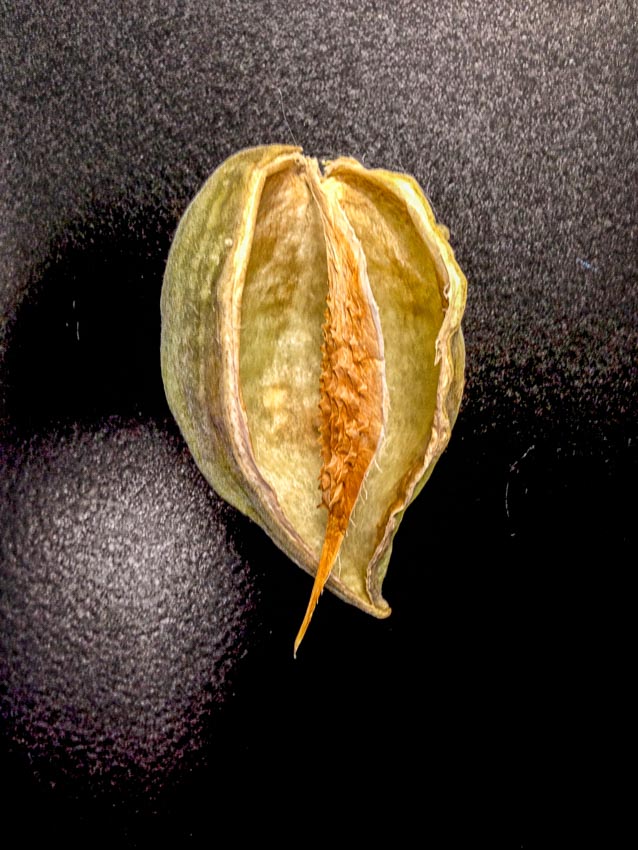
Perhaps the picture below better demonstrates the architecture of this botanical backbone and the pointed tips which probably help to secure the seeds until, in a natural setting, they are dry enough to float away on their own.
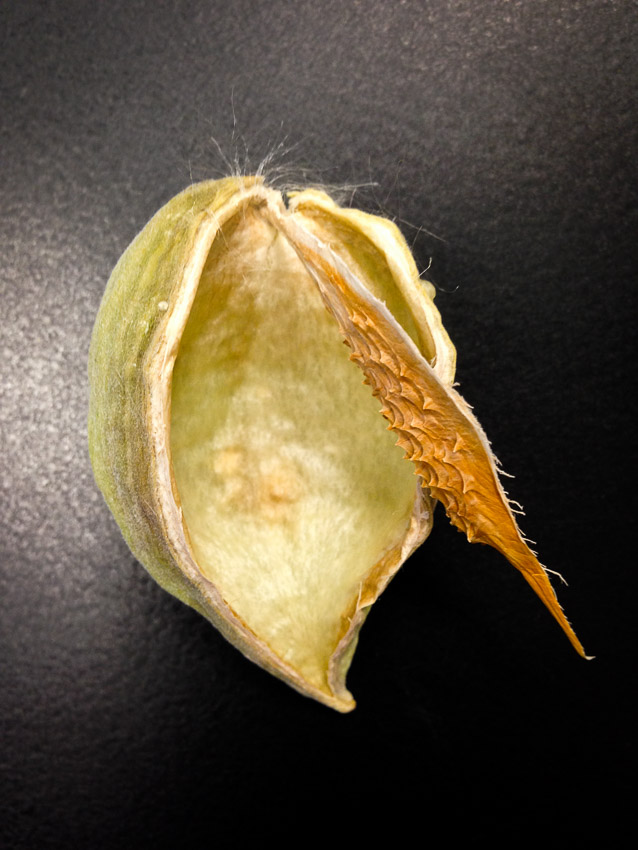
The empty seed pod was slightly sticky and offered a relatively cushioned home for the seeds to await their release.
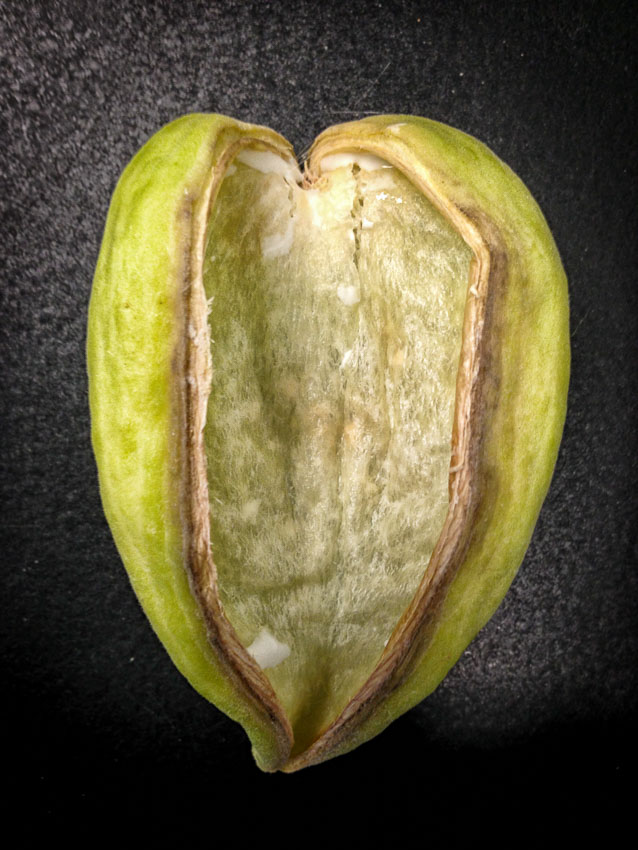
The two pictures below show milkweed in its natural growing habitat. Both pictures are used courtesy of The New Hampshire Chapter of The Appalachian Mountain Club
The first picture shows how similar the seeds look while clinging to the pod in the wild.
The second photograph provides a glimpse of how the seeds float away on the wind hoping to find a hospital place to root and grow.
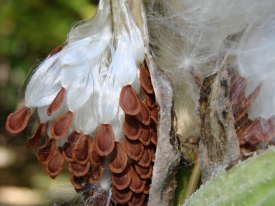
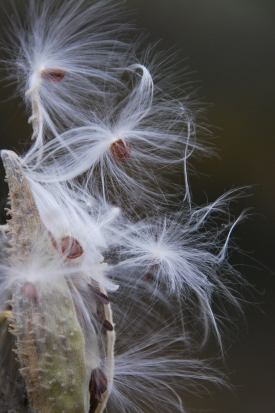
You can find more JBRish posts about plants and gardening HERE.